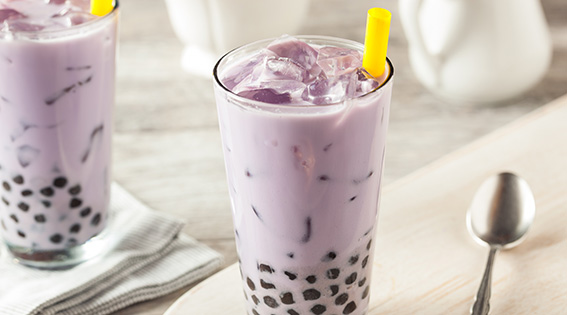Comax Flavors’ 2020 Flavor Trends
As consumers continue to seek healthier, better-for-you products, plant-based foods and beverages are inundating the market with no signs of waning and sober curious consumers are exploring low and no alcohol beverage options. In response to the consumers’ evolving behavior, Comax Flavors introduces the 2020 Flavor Trends divided into four unique flavor collections.

As consumers continue to seek healthier, better-for-you products, plant-based foods and beverages are inundating the market with no signs of waning and sober curious consumers are exploring low and no alcohol beverage options. The younger demographics continue to explore multicultural flavors with a current cultural affinity for Asian flavors while the popularity of raw cookie dough has remained prevalent as consumers enjoy nostalgic treats. In response to the consumers’ evolving behavior, Comax Flavors introduces the 2020 Flavor Trends divided into four unique flavor collections.
Plant-Powered Snacks: According to Innova Market Insights, there was a 17% increase in the growth of snacks with a health claim in launches between 2013 and 2017 and a 22% rise in those with a nutritious claim. Launches with plant-based ingredients grew at a 44% CAGR during the period. Furthermore, 80% of consumers are willing to pay more for snacks with health attributes, according to the Hartman Group’s The Future of Snacking Study. Flavors in this group include: Maple Bacon Ranch, Honey Sriracha, and Lemon Truffle.
No Proof Needed: According to IWSR, bottled low and no alcohol beverages in the United States will grow by about 32% between 2018 and 2022—triple the category’s growth over the previous five years. This growth is evidenced by consumers’ changing behavior. According to Morning Consult data, nearly half of consumers, regardless of age, have purchased non-alcoholic alternatives, and just over four in 10 of the drinking-age population does not drink. Flavors in this group include: Matcha Pineapple Punch-less, No-Geroni, and Mango-No-Tini.
Asian Influences: The younger generation continues to crave adventurous and authentic global flavors and share their discoveries on Instagram as well as other social media sites. Attracted to unique flavors, colors, and textures, there has been a boom in Asian food and beverages. According to Foodable Research Labs, Asian flavors on menus at fast-casual restaurants are up nearly 30% year over year. Furthermore, millennials have increased menu consumption of Asian flavor-based menu items by more than 12% year-over-year. Flavors in this group include: Milk Tea, Japanese Pancake, and Ube Vanilla.
So Doughlicious: Eating raw cookie dough is a nostalgic act and thanks to pasteurization and heat treatment, 2017 was the breakout year for safe, edible raw cookie dough. Regardless of age, edible cookie dough continues to excite adults and children alike. According to Technomic’s MenuMonitor, cookie dough is seeing a 9% year-over-year growth on restaurant menus while the cookie category increased 2.6% to reach $8.8 billion for the 52 weeks ending March 24, 2019, according to IRI data. Flavors in this group include: Birthday Cake Cookie Dough, Cold Brew Coffee Cookie Dough, and S’mores Cookie Dough.
More News
National Honey Board seeks honey–food pairings to encourage consumption of Mediterranean diet
The National Honey Board (NHB) is currently accepting pre-proposals for honey food-pairings to help Americans consume a Mediterranean diet pattern. Interested researchers need to submit a short pre-proposal by November 13, 2020.
National Honey Board seeks honey–food pairings to encourage consumption of Mediterranean diet
The National Honey Board (NHB) is currently accepting pre-proposals for honey food-pairings to help Americans consume a Mediterranean diet pattern. Interested researchers need to submit a short pre-proposal by November 13, 2020.
U.S. foodservice industry set to rebound to pre-pandemic levels by 2023
The latest research from Mintel shows that after several years of growth, the foodservice industry is expected to decline by up to 30% from 2019 to 2020, following nationwide dine-in bans/restrictions, restaurant closures, job losses, and lowered consumer confidence.
U.S. foodservice industry set to rebound to pre-pandemic levels by 2023
The latest research from Mintel shows that after several years of growth, the foodservice industry is expected to decline by up to 30% from 2019 to 2020, following nationwide dine-in bans/restrictions, restaurant closures, job losses, and lowered consumer confidence.
COVID-19’s impact on lifestyles and eating behaviors in Asia
According to Innova Market Insights’ COVID-19 Consumer Survey (conducted in March 2020), in China, India, and Indonesia, personal concerns center on health, personal income, and the availability of healthcare and products to buy.

